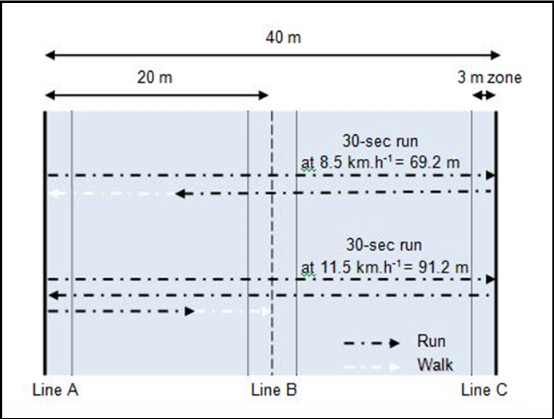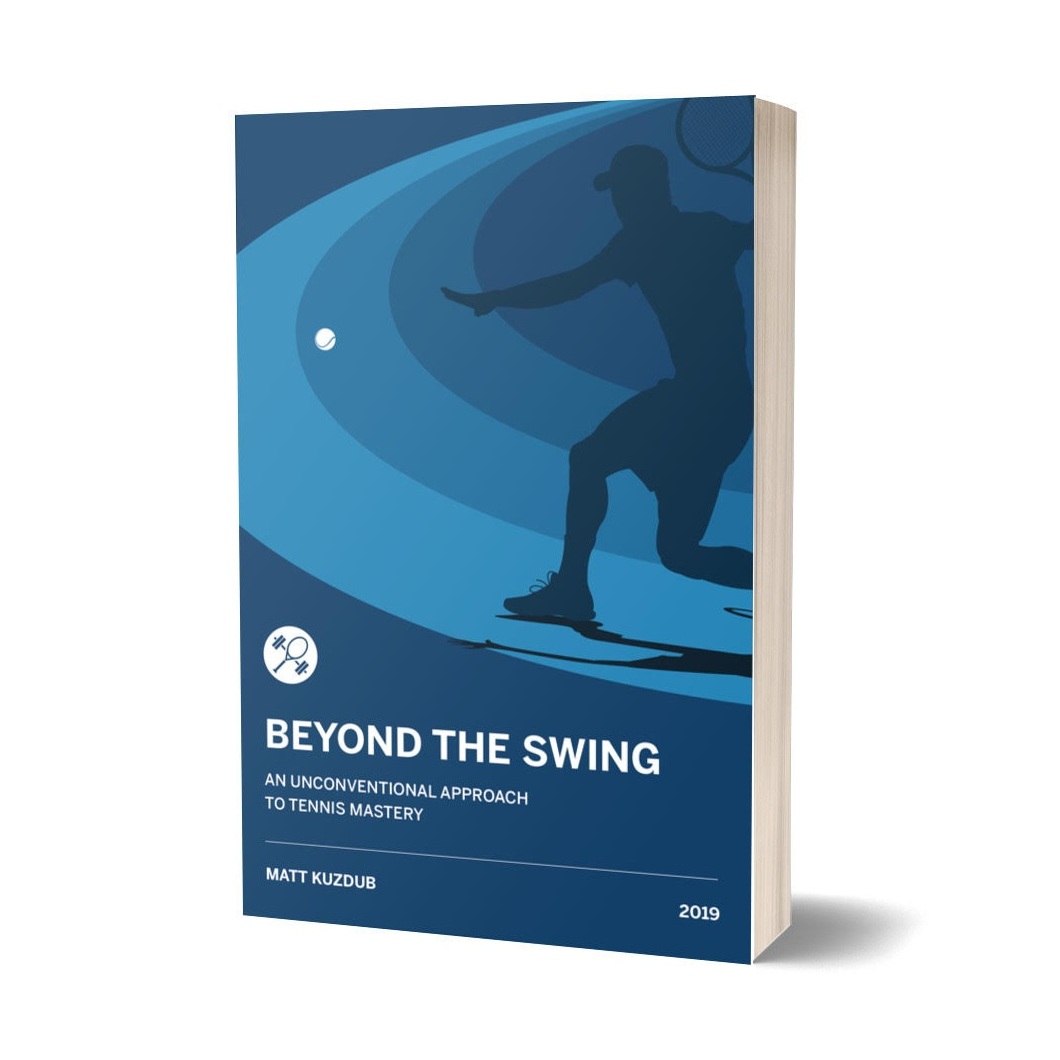This is a follow-up post on aerobic fitness for tennis; written by my colleague and friend, Cyril Genevois (PhD). Cyril is one of the leading sport scientists with a focus on tennis research & application.
He works with high-performance centres, organizations and federations to help optimize their training environments - using cutting-edge sports science research in the process.
You can follow Cyril on Facebook for research updates, tips, and everything tennis science.
To read the first part of this post, click here.
Aerobic Fitness Testing
Specific tennis fitness tests that take into account technical efficiency, have been validated scientifically (part 1) and could be considered ‘gold standards’. But these tests are exclusively reserved for players in well-structured centres because of the detailed methodology necessary for successful execution.
For years, national federations have used the multistage fitness test (or 20m shuttle run test) to evaluate aerobic fitness due to its practical implementation and ease of use. However, though it involves change-of-direction (COD) movements, it’s still a continuous incremental test and does not represent the intermittent characteristics of tennis play. Thus, a better option to assess aerobic fitness and to better plan run-based HIT, the 30-15 Intermittent Fitness Test (30-15IFT) is recommended. A complete description of the 30-15IFT protocol and associated materials (audio file and articles) are available online (https://30-15ift.com/).
The 30-15IFT is an intermittent incremental test with 30 seconds of running at increasing speeds, interspersed with 15-second passive recovery periods. Initially, the test was designed in a way where players were required to run back and forth between 2 lines set 40m apart at a pace that was governed by a prerecorded beep (figure 1). A modified version with 28m shuttle runs for smaller courts such as basketball, netball and racquet sports is now available as well.
Figure 1. 30/15 IFT protocol with 40 m shuttle runs
Because of the intermittent nature of the test, the final speed reached at the end of the test (VIFT) is a compound measure of maximal aerobic power, anaerobic speed reserve, inter-effort recovery and COD abilities, which are important physical qualities involved in tennis performance.
The 30-15 IFT has been shown to be a valid and reliable measure of V02 max (Buchheit, 2009), when compared to the V02 max achieved during a standard continuous test while being perceived to be less ‘painful’ due to the 15" rest periods.
The velocity (km/h) attained during the last completed stage (VIFT) is the reference value to individualize speed-based HIT. But it is important for coaches to understand that the VIFT (i.e. the player’s 30-15 IFT score) is not a direct reflection of their maximal aerobic speed obtained with a standard continuous test because of the « anaerobic velocity reserve » (Buchheit, 2010). Thus, VIFT is on average greater than maximal aerobic velocity (VMA) by 15-20% (2 to 4.5 km/h) !!!
Implementation of HIT with Short Intervals on the Tennis Court Using the VIFT
General Preparation Phase
During the general preparation phase (≈ 6 weeks), the goal is to optimize the time at VO2max. Work intervals from 15" to 30" are used with 2 sessions per week separated by at least 48h (table 1). The running distance is calculated from a set running time and the chosen percentage of VIFT.
Table 1: Examples of high-intensity intermittent shuttle runs using VIFT as a reference speed to individualize running distance during the general preparation phase and adapted for tennis players.
The work intensity is slightly lower than that usually planned for straight line runs to compensate for the lost time during the COD (≈0.7s/COD). Indeed, the COD induces an increase in the anaerobic metabolism solicitation and consequently creates different responses compared with traditional straight line running (Dellal et al, 2009). Though VIFT is the reference to calculate the running distance, adjustments can be done according to the player performance (too easy or too hard). Moreover, to compensate for the likely increase in players’ fitness throughout the training phase, initial training intensity (%VIFT) should be increased by 2.5 percent every 2 weeks.
Figure 2. HIT on tennis court using 10, 20 or 30 m shuttle runs
Specific Preparation Phase
During the specific preparation phase (≈ 3 to 6 weeks), the goal is to prepare the players for the specific demands of the match. The primary aim is oriented towards the ability to repeat short, high-intensity bouts - which are related to the peripheral oxidative capacities - using Repeated Sprint Training (RST - 1 session) and On-Court Specific HIT (1 session). See table 2.
Table 2 : Repeated Sprint Training (RST) and On-Court specific HIT during the specific preparation phase adapted for tennis players.
During this phase, RST and On-Court Specific HIT are performed at least 48 h before strength or speed-oriented training sessions, to ensure optimal player freshness in these sessions.
Competition Phase
The competition phase is the most important time - the goal is to maintain the fitness level that was previously achieved - while monitoring the training load (high with technical/tactical sessions and other conditioning like power that are the priorities). One session per week using on-court tennis HIT seems to be the most adapted to this period. However, when the strength/power sessions are not programmed in a particular week, one RST session is preferred to compensate for the lack of neuromuscular load.
Effects of HIT on VIFT and Heart Rate
The 30-15 IFT allows to monitor performance changes induced throughout the season. Coaches may interpret a performance improvement of at least 1 stage after a training program, as an “almost certain” increase in cardiorespiratory performance. Monitoring HR during the test can also be used to assess the player’s progress over time. For example, as the player gets into better shape, his heart rate will be lower when running at the same pace and with a greater HR recovery between the bouts of effort (figure 3). From a practical point of view, the player will spend less energy for the same game pace.
Figure 3. Effects of 8 weeks of HIT training on VIFT and HR
For more on the application of aerobic fitness for tennis - including implementation - connect with Cyril Genevois on Facebook.






